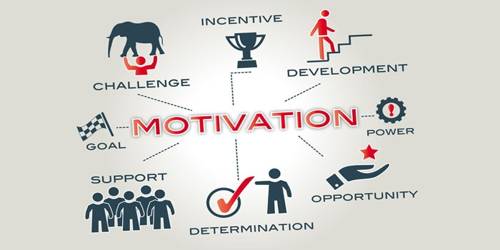Motivation is the reason for people’s actions, desires, and needs. Motivation is one of the essential aspects of HRM which is concerned with the process of inducing, inspiring, organizing, and stimulating employees to do the better job in the organization. The term is generally used for humans but, theoretically, it can also be used to describe the causes of animal behavior as well.
Techniques of Motivation
The types and techniques of motivation refer to different methods of motivating employees. All such methods are based on an application of different motivation theories. Some of the important methods or types are as follows:
- Participation
Participation refers to an activity involving employees in management decision making and planning activities. Participation of employees in formulating corporate plans and policies provides the feeling of belonging, recognition, acceptance, accomplishment, and responsibility. As a result, employees will be motivated for a higher level of performance.
- Behavioral Motivation
This refers to the process of enhancing employee’s behavior with the help of different tools and techniques. Because the changed behavior of employees can motivate themselves towards the higher level of performance. This also increases their job responsibility.
- Money and Financial Benefits
Money and financial benefits are generated externally. They are provided in terms of pay, incentives, benefits, and other tangible services. This works as a ‘carrot’ for motivating employees.
- Work Group
Under it, employees are categorized into different work units to fulfill their different societal needs. Then the employees are allowed to work in the group, and they discuss the quality and productivity thereby finding out the causes of deficiencies. Hence, employees are self-motivated and self-directed towards the attainment of organizational jobs and responsibilities,
- Profit Sharing Plans
It is another way of motivating employees by allowing them a certain percentage of profit. When employees directly participate in the profit of the company, they can be motivated towards earning the better profit.
- Skill-Based Pay
This method of motivation is concerned with paying employees on the basis of skill held by them while performing the tasks. By doing so, highly skilled employees will be directly motivated towards a higher level of job performance. Similarly, employees with lower skills are induced to improve their skills and knowledge.
- Flexible Return
This means the designation of a pay system or incentive plan which is based on attempt shown by the employees in the actual workstation. If individual’s efforts and attempts are recognized by some sorts of considerations they can motivate themselves for the higher level of performance.
- Representation
It is another important form of motivating employees. Under this technique, employees are appointed in management committee to participate in decision-making activities. If the employees get representation in the management, they can present their opinions, feelings, ideas, and views clearly. Ultimately, this leads them towards their commitment to work.
Information Source;
















